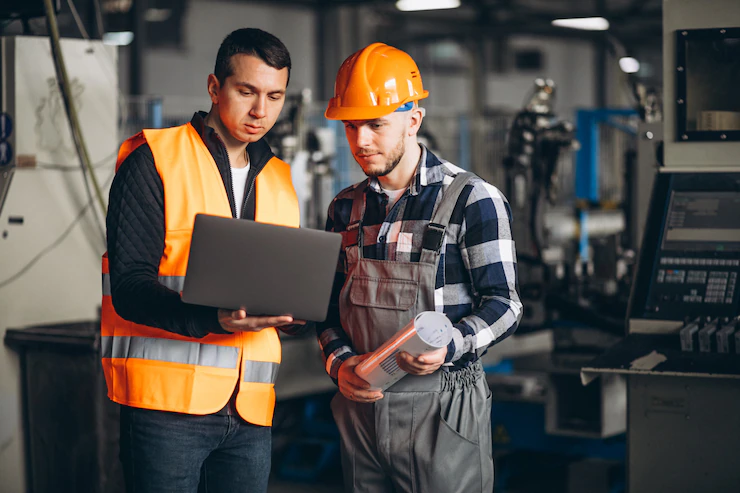The Importance Of Preventive Maintenance In Facility Management

Preventive maintenance is one of the most important elements of facility management. It’s especially relevant in office buildings with high-value assets and advanced HVAC systems as well as warehouses, factory floors, hotels, schools, hospitals, and other commercial facilities.
Building assets, no matter how advanced, are prone to wear and tear over prolonged usage. Facility managers have two options to deal with equipment issues. You either follow reactive maintenance or choose a preventive maintenance system to expand the lifespan of your building assets.
Experienced facility managers recognize that reactive maintenance is a flawed approach as it means you will have significant downtime when a breakdown occurs as well as high repair costs.
Moreover, the replacement costs will be higher due to the shorter lifespan of assets due to frequent breakdowns. On the other hand, regular preventive care ensures optimum productivity and minimizes the risk to life and property. Exploring the importance of preventive maintenance should help you choose the right service for the job.
Optimizing Asset Lifespan

Optimizing asset lifespan is arguably the most important factor determining production cost coverage. The longer the duration between successive breakdowns, the more value for money your heavy equipment provides.
Assigning PM KPIs such as MTBF (Mean Time Between Failures) and Downtime Tracking can assist facility managers to set up an effective preventive maintenance schedule. You can successfully prolong the MTBF factor by hiring a comprehensive facility maintenance service that can ensure you get the most out of your equipment.
Typical preventive maintenance protocols not only include a review of the moving parts of the equipment but also setting up optimum working conditions such as RPM, power, and torque. The same machine will work longer if you run it at a rate that is least conducive to wear and tear.
Improves The Building’s Operational Efficiency
Regular preventive maintenance allows facility managers to gain key insights into how to optimize the efficiency of heavy equipment, such as the HVAC unit. The key is to run the facility under ideal working conditions, but that is not the only KPI you should consider.
In addition, you need to factor in the time assigned to let the equipment rest between successive shifts. Also, an efficient preventive maintenance engineer imparts the necessary training and skill set to the equipment operator to prolong its efficiency.
Efficiency optimization also involves incorporating sustainable machine handling properties such as avoiding using the machine beyond the minimum assigned RPM to save on electricity costs. You can check the electricity bill calculator texas and how this can help know the ins and outs of different electric plans.
Overall Equipment Effectiveness (OEE) is one of the most important KPIs utilized in measuring efficiency. OEE is measured against factors such as the condition of the machine, its average uptime, and ideal performance settings.
Prevent Unplanned Downtime
In large commercial facilities, all major equipment must have an average planned downtime when alternate equipment is used to keep the facility operations active. As long as you can plan and arrange the downtime in a controlled manner, it is not a problem. Based on this, unplanned breakdowns can bring the entire building or business to a halt causing a loss of time and resources.
Preventive maintenance engineers utilize a hybrid model of manual and digital inspection modules to avert the occurrence of unplanned downtime. Although it is not entirely avoidable, you can expect a significant improvement in building performance with a comprehensive preventive maintenance strategy.
Set Up Upgrades
The primary objective of the facility maintenance team focusing on preventive maintenance is to ensure the building assets can live up to their optimum lifespan before a full replacement becomes necessary. Some pieces of building equipment are naturally more prone to wear and tear. A regular oversight into ideal facility performance should include which building assets or pieces of equipment need an upgrade.
Timely planning of upgrades is a key aspect of preventive maintenance because you will have to factor in the time to acquire the damaged part, set it up, and continue with the operations.
Reactive maintenance is considered a weak approach because it results in expensive replacements once the building equipment suffers a complete and irreparable breakdown. Proper preventive planning helps to save costs and keep the apparatus functional for a prolonged period.
Cost Management
Many facility managers happen to think that reactive maintenance is less cost-intensive because regular preventive care would increase the maintenance budget. Taking this into account, this is not exactly true because the cost of replacing the entire equipment is usually more than that of the incremental expenditure involved in prevention.
In addition, since preventive maintenance protocols extend the longevity of the building assets, you need to factor in the additional products that would otherwise be unavailable if you depend on reactive maintenance. Moreover, complete breakdowns also involve halting or a temporary suspension of the facility operations, often costing thousands of dollars every hour.
Setting up an effective preventive maintenance workflow model lets you compare the costs against the total expenditure of replacing the machinery. The total expenditure should also consider the losses incurred by pausing the production and supply chain.
More Efficient Manpower

At a very basic level, a machine is only as good as the operator handling its functions. More efficient operators can ensure optimum performance and productivity compared to untrained personnel. Furthermore, any new piece of equipment would involve a steep learning curve before the operator becomes habituated to the ideal performance modules.
A preventive facility maintenance team can help minimize the learning curve duration by training the operator on the best modes of operation. The training would also include other key parameters such as identifying the outward symptoms of a breakdown and deploying buffer mechanisms to run the facility operations even in challenging situations.
Adequate training also involves adaptability to the digital and electrical inputs of machine performance. Following a continuous assessment of the learning skills of the operator, a facility maintenance engineer can also suggest the best personnel for the job.
Heavy equipment handling often requires a highly specific skill set and a certain level of spontaneous adaptability. Employing incompetent personnel can do more harm than good and cost the organization thousands.
Preventive maintenance service providers may sometimes have to work closely with facility supervisors and HR managers to select the best in-house individuals for the job. The ideal person should be able to display quick learning skills, decision-making abilities, and a displayed knack for safe handling of the equipment.
Timely reporting of machine issues is a key factor to deploy effective preventive maintenance programs. The goal here is to devise a human resource workflow analogous to the optimum performance of the building equipment.
Prevents Loss Of Life And Property
Operational failures in large commercial buildings not only pose the risk of losing productivity but can also lead to serious injuries, fatalities, and property damage. Irregular facility maintenance is often the main reason why such incidents happen. Moreover, organizations have to remain responsible to ensure maximum safety and the best working conditions for the operators and the building occupants.
Timely preventive maintenance reduces the risks of faulty building equipment, thereby bringing down the incidence of personal injury incidents. It’s also equally important to keep a close eye on the current working condition of the equipment and follow the safety tips offered by the facility maintenance teams.
Occupational safety data reveals that warehouse floors, factories, and other commercial facilities report a rate of fatal injuries higher than the national average. Timely and effective deployment of preventive maintenance techniques is essential to keep the floor active and safe at the same time.
Proud To Serve As Your Facility Maintenance Partners
Servi-Tek is proud to serve as the facility maintenance partner to hundreds of top organizations and large commercial properties. With our decades of experience in the field, we have been able to develop a strong preventive maintenance workflow to ensure your facility achieves the maximum output potential. We work closely with facility managers and in-house teams to determine the most effective maintenance plan for your organization.
Our services are available in several locations including San Francisco, San Diego, and Anaheim. Call us at (866) 454-6185 or fill out our online contact form to discuss your facility maintenance requirements.
Read Also:











